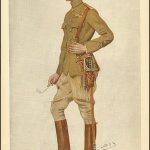This is one of the planet’s biggest and most unknown continents. It surrounds the South Pole, and lies almost entirely to the south of latitude 66º 33’ S. This is called ‘The Antarctic Circle’.
Travellers who have dared to enter this formidable area of the Earth have noted that the sun neither rises at midwinter nor sets at midsummer. At the South Pole itself the temperature is on average -50º C; this is because an excessively thick icecap covers the continent, forming a huge plateau. Strong winds invariably blow from the centre of the icecap, and it usually too cold to snow. The little snow that does fall takes hundreds of years to change into ice. The ice moves so grindingly slowly that parts of the icecap are millions of years old.
In Antarctica’s coastal regions stand some mouintain ranges through which glaciers flow. Where they emerge into the almost permanently frozen sea (global-warming has an effect everywhere) they form vast ice-shelves that make the continent seem bigger than it actually is. There are places where a rocky shore can be seen, with tiny patches of moss and lichen (tough enough even for the Antarctic) growing sparsely but evidently.
Over the last eighty years scientific expeditions to the continent have discovered a great number of meteorites in fairly good condition, in addition to unfrozen lakes the size of small seas well beneath the icecap.
Of course Antarcticawas always there, but it took until around 1820 for an expedition to be mounted by Fabian von Bellingshausen, who despite his teutonic name was Russian. Then there were more scientific and geographical Russian, British, French and US expeditions throughout the rest of the 19th century. The dangers were great; not least the extreme temperatures at a time when even the average home in Europe was not heated properly – individual coal and wood-burning fires failing to heat even small rooms. In the 19th century the only acceptably warm room in the house was the kitchen.
In the first decades of the 20thcentury much overland exploration took place. A British expedition headed by Ernest Shackleton travelled by dog-drawn sledge to within 156 kilometres of the Pole. It was 1909. Amundsen’s Norwegian group actually reached it in 1911. Captain Robert Scott’s British party got there in 1912, but all members of the expedition died on their return journey. It was on this adventure that the still famous Captain Oates, fearful that there would not be enough to eat and drink for all and half blinded by the ice-glare, left the comparative safety of the tent during the night saying he needed to strech his legs. He was never seen again.
Needless to say several countries have laid claim to parts of the territory. Neither Russia nor the USA recognise the British claim made in 1908 (British Antarctic Territory). The Ross Dependency was claimed by New Zealand in 1923; Australia joined the club in 1933 with her Australian Antarctic Territory; France (Adélie Land in 1938; Norway (Queen Maud Land) 1939; Chile (Antarctic Peninsula) in 1940 and Argentina (Antarctic Peninsula) in 1942. Britain, later Russia and the United States were too much involved in a World War during the last two claims to take much notice, but Russia and the USA do not recognise any of the above-mentioned claims.
Then came the practical and well-timed Antarctic Treaty in 1959, preserving Antarctica for peaceful purposes, pledging international scientific cooperation, and prohibiting use of the continent either for the dumping of radio-active waste, or the testing of nuclear weapons. In 1991 a 50-year ban was placed on any exploitation of the continent’s huge coal and mineral resources. Serious organs such as the National Geograpic Society do not believe that the ban is being observed by certain nations. There is also the question of oil . . .









Leave A Comment